LIKE FINDING HEN"S TEETH.
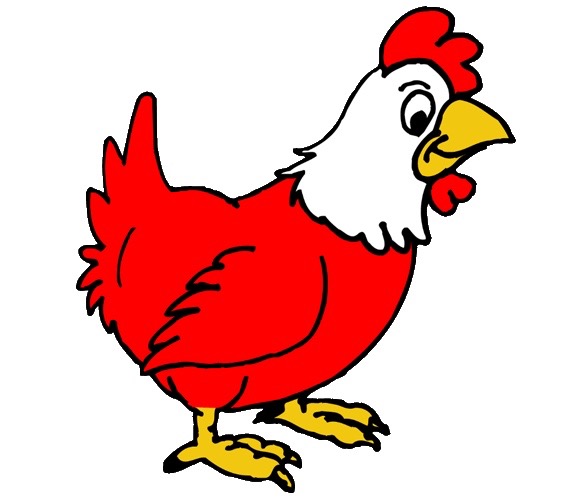
If you remember at the beginning of 2016 I received a email from Alan Lampkin,
Here it is.
I have recently found and bought my C15 works BSA trials bike, reg no. 748 MOE.which my son James is intending to ride in the pre 65 SSDT, as it is just 50 years since it won the main trial.
Restoring it is not an easy job as the last owner was not very mechanically minded...
I am looking for a top yoke 40-5094 as mentioned in Brian Martin's article on the works C15,s.
Mine is broken on the clamp bolt part.
I know I am looking for a needle in a haystack, but am trying as many leads as I can.
Looking forward to your reply
Regards Alan.
Well within an hour Ian Ballard had mailed me after searching his shed .
Just had a quick look, but no luck, have found one that quickly superseded it 40 51 14, listed for competion models.
It depends on what is still on the bottom yoke.
Regards Ian.
I placed the story on the News page and that is where Ian and a few more saw it and mailed me with suggestions.
I looked, and found what looked like one in a dealers web page from Liverpool so mailed them for the casting number, No reply.
I kept looking has I would quite like a set of these myself for the "Eddy"BSA bike.
The story and the search went cold, for a while, even I had given up, although I had found a bunch of yokes on eBay without numbers so just dismissed them.
Then one evening last week (FEB) I was working on this site, and Ping an email, I carried on finishing updating the page I was on.
Looking at the e-mail later It was from Ian Ballard.
05/02/2016.
Just found a top yoke on eBay for £49 pounds...
Listed under 40 5094 top yoke.
Probably sorted but thought I would send just in case.
Sent email to Talmag sec with a message to the man on the Otter giving him your website details
Best regards
Ian
I got straight onto eBay typed in "BSA C15 top yoke" thinking it will be gone, I should have got straight on to that mail.
Scrolling down the page there it was,
"Works Top Yoke" 40-5094.
I hardly looked, saw the casting number on the yoke picture and hit the "Buy Now" button.
It arrived yesterday the 8th Feb. 2016...
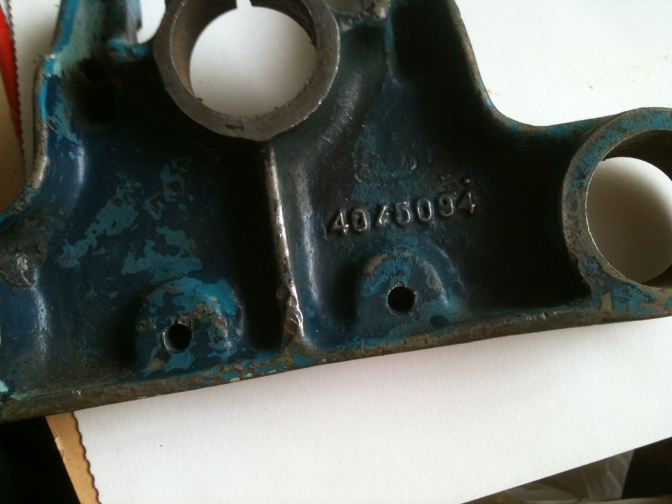
40-5094 And in top class condition.

Fitted onto "Starfire" fork legs. The BSA C15T it was fitted too must have been Metalic blue at one time? There is just a trace of black paint in the steering stem hole.
 Feed Back.Page. Not enough
Feed Back.Page. Not enough
So what do I do now?
Well for a start I will see if I can get a batch "investment cast," or even CNC'd for a one off..
First thinking.
Before I let this little gem out of my sight.
But what about the Bottom Yoke?
Well the Story continues, I can say no more than that at the moment.
But It could become very interesting.
PS. I will later tell the Story of how I got a camshaft like the one fitted to Ariel GOV 132.
At the beginning of 2010 We were Thinking about building New Ariel HT 5 engines, (Well we still are).
New Crankcase patterns were made ready for casting, and most of the other parts were sourced, we had even found a company to make the camshafts and grind them. Then unfortunately the Pattern maker became very ill.
Then Going through eBay like you do, I found the below, and we just had to have it for our engine project in-case that Cam profile was what made GOV 132 tick.
Don Morley> Ariel camshaft.
Incidentally when Sammy Miller sold GOV 132 and the sister bike 386 GON to Commerfords we took it apart and copied the soft cam, but did not copy the cam followers (seem to recall it was single lobe follower's, rather than the two separate-twin lobe followers). Though it’s a long time ago.
Anyway that’s the history of the cam you have just bought, but to be honest, I never really got on with it-And nor did Mick Grant who borrowed it off me twenty years ago, and this is what makes me realize we should have paid more attention to the Follower’s.
That said I did mess about with the timing and found it much better not to rely on the timing marks –But sadly I failed to keep records or make any notes and now cant remember the best settings, but think it was either one tooth advanced or retarded.
Just to say thank's for finding a home for it and I hope you like it,
Best Wishes Don...
Ariel HT5 Trials Genuine “Works” Cam As Millers GOV132
Sale Price £225, 01/03/2010.
This is what Don said about the "Work" Camshaft in
"Classic British Trials Bikes".
"Ironically the works stars had the benefit of some very special gentler works cams, and having owned an ex-works machine so fitted, it must be said that the soft cam makes the greatest single improvement to any 500cc Ariel.
Unfortunately these cams are extremely rare, so other engine softening measures must be considered".
"Though outwardly the same and both carrying the GOV 132 number, one of these machines had the "Works Cam",whilst the other was set with the standard component for the full power sections or such events as the speed orientated Scott trial. The former had a much more pointed profile,with appreciably less lift and overlap, which-all but lost-top end performance, but at low revs the bike would climb up the side of a house wall".
So Don liked the cam when he wrote the book?
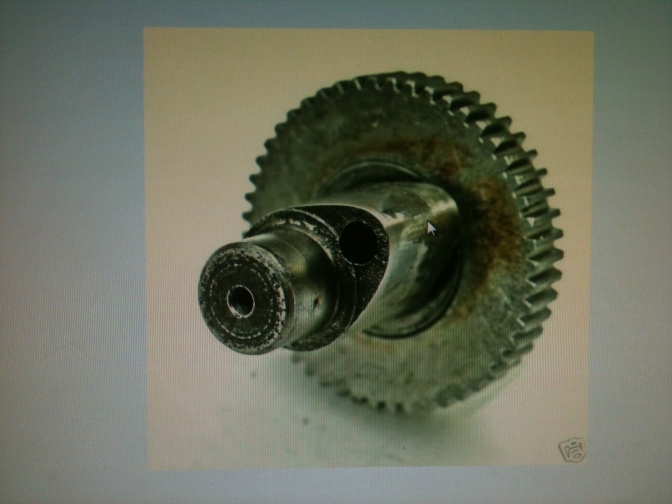
This is the picture that was on the sale site, and I could see that it was a different profile.
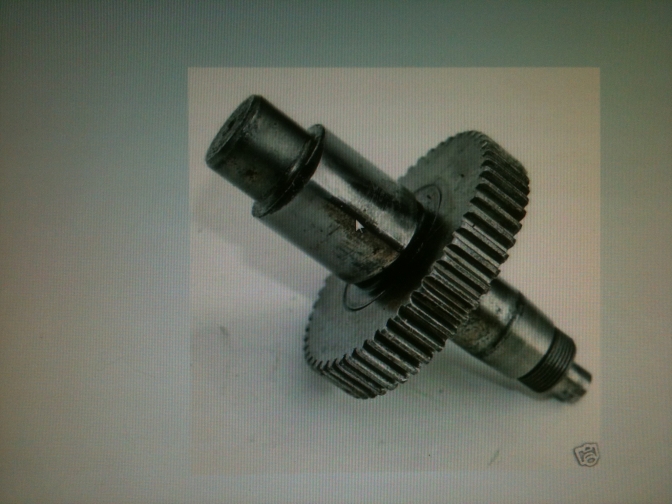
I only bought it to copy but we should try it first. I will pop it into-one of the bikes and see what it is like.
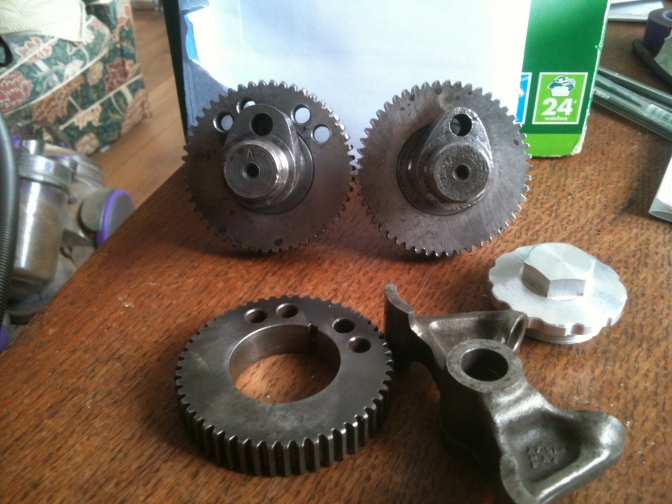
You can see the vast difference with the profile on the SAM Cam to the more rounded standard Ariel HT cam.
Deryk Wylde fitted the GOV132 camshaft into his bike when he rebuilt it.
I will find out what he thought.
Deryk...
Hi Charlie,
Deryk's other reply.
Charlie,
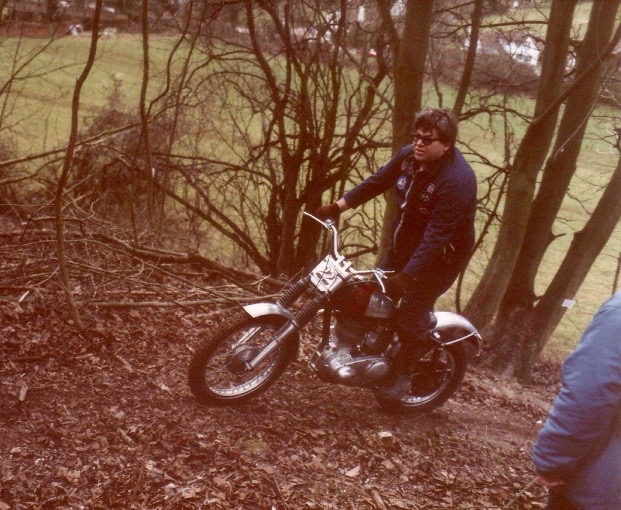 Photo Courtesy Ian Ballard.
Photo Courtesy Ian Ballard.
This is Deryk Wylde riding the Ariel with the Cam and followers fitted after he had just rebuilt this imaculate machine.
Just a bit about the followers to clarify the situation.
Up until 1951 the single cylinder Ariel engines had a a camshaft with two lobes ground onto it.
This meant that the two cam followers were handed so that each ran on a different side of the profiled cam.
After 1951, the camshaft became a Single lobe (Like the Camshafts above), this meant that both cam followers ran on the same cam profile.
The advantage was that the feet of the followers could be made wider and therefore save wear on both them, and the camshaft.
But you could if you wanted to mix and match, IE, still fit the old type handed twin lobe followers on the single lobe camshaft.
Now with a different profile to these followers than the ones designed for the single lobe cam, this would in affect, give a different valve timing.
So what Don should have done, like he says, taken more notice to what cam followers were in Ariel GOV132 when they decided to copy the Camshaft profile...
Someone in Australia has now made a new batch of these handed cam followers so perhaps I better get a pair of these to try with the "Works" camshaft.
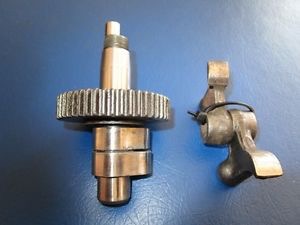
Here you can clearly see the handed followers and the twin lobed ground cam.

Here you can clearly see the difference in the Ariel Cam profiles.
The one on the left is the "Works" Cam the "A" type cam on the right and the middle one is I think the HS cam.
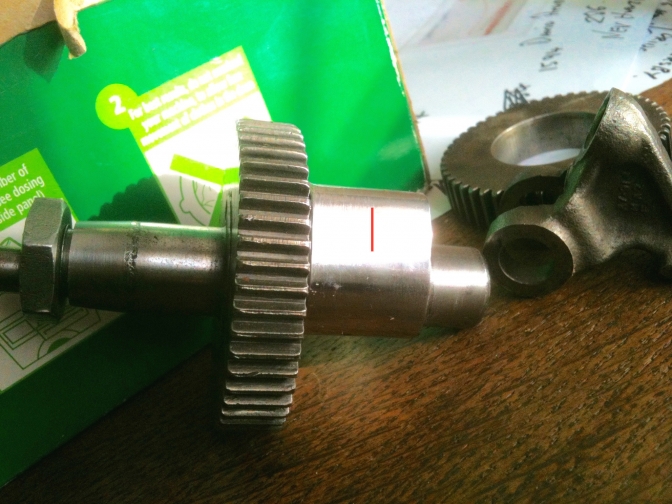
It is difficult to see so I have marked it, (in Red) but there is signs on the cam surface on the inside to the middle that a handed cam follower has been used with this "Works"cam, perhaps Mick Grant used these when he tried the cam?
Notes for me below.
David Anderson Australia.
Ariel HS and standard followers are both ½” radius but the angle of the foot varies slightly (due to a different location of the centre of the ½” radius circle that forms the foot). For example with standard followers a P1 cam has 84 degrees of valve overlap but with HS followers that figure increases to 113 degrees. The HS follower also gives more lift. And yes a HS follower on a standard cam also gives more valve overlap and lift.
Nev Hunter. Australia...
The single cam and wide followers is a good setup for longevity but everyone I know/ knew seemed to think that a duel/split cam is more able to be tuned. The follower is not light. and the single cam a having different rise and fall rates is a big compromise. the speedway JAP gets much of it's performance by keeping moving parts light. Nev...
Dave Owen Swindon.
If it works this is picture of a twin lobe cam I had re-profiled to single lobe with HS timing and 11mm lift for fast road use in an all Iron VH using standard follower’s. The work was carried out by Joy Engineering in the UK.
I'm running 7.5Cr and std followers, bottom end power is greatly increased, whilst the top end is much the same at 75-80 ish on a good day.
Photo.
 Built up two lobe Camshaft by Joy Engineering.
Built up two lobe Camshaft by Joy Engineering.
More later.
~~~~~~~
02/10/2019...
Into Room One-O-One...
Here is another of those elusive items...
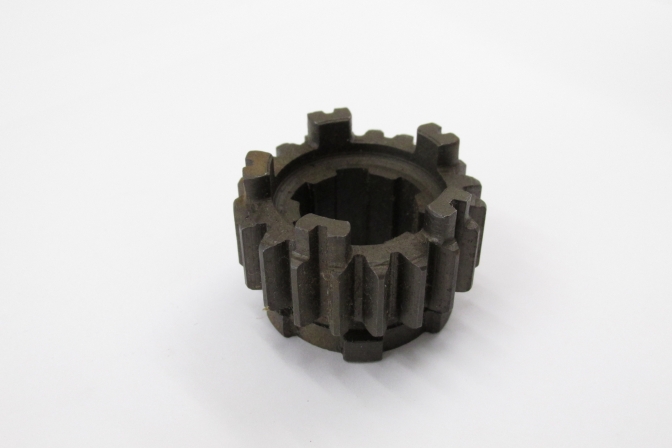
I have been asked if I know where there is a BSA B40 WD second sliding gear with 20 teeth 40-3101... for a very special project.. that is on the cards at the moment... and should be at Telford at the beginning of next year...
but the project will not be complete without the gears will it..
So please if any of you knows the were-a-bouts, of one of these gears can you let me know please. And even the matching 30 tooth would be good.
We need to see the project complete...
Much more later...
We have loads of parts to find...2019...
Updat2023...06...






